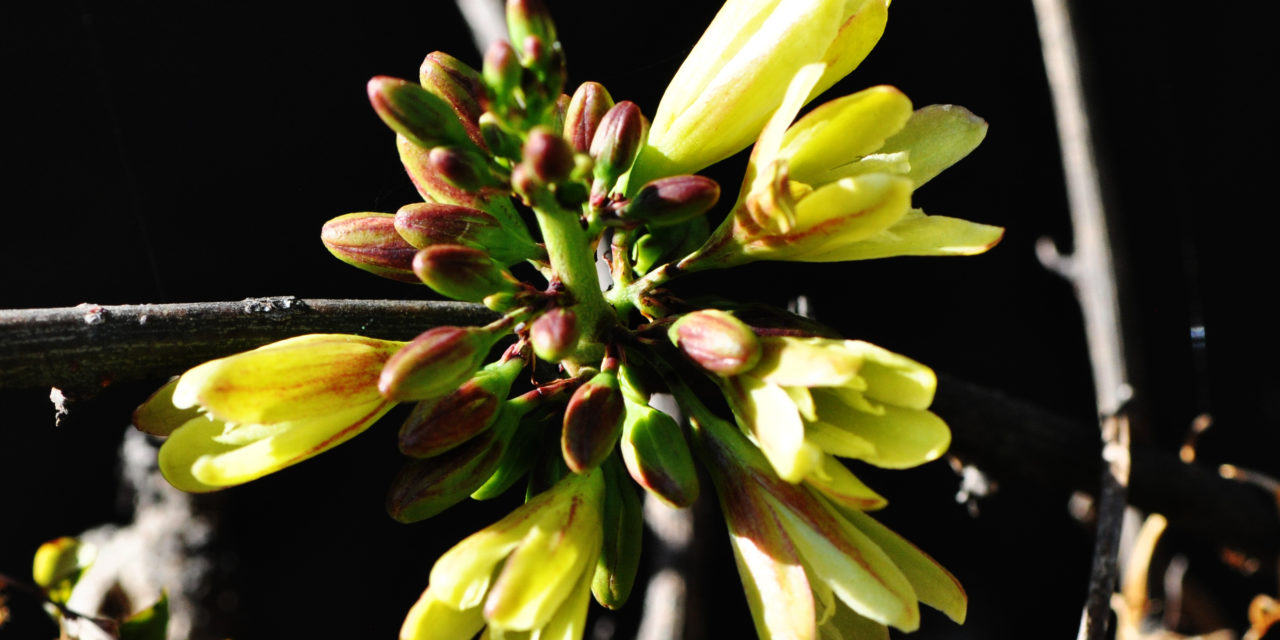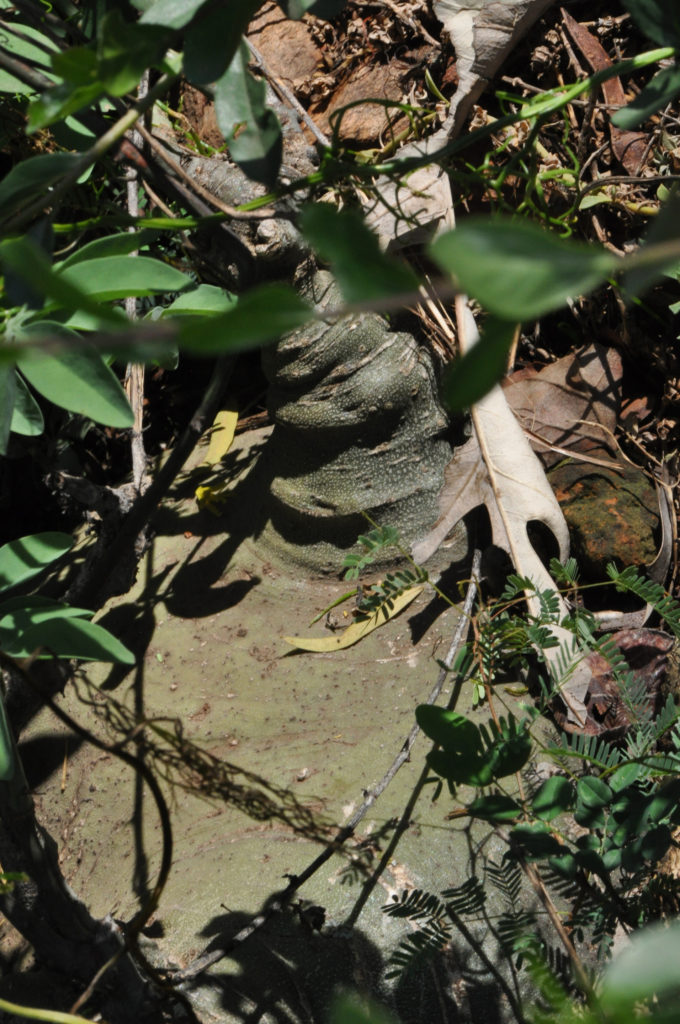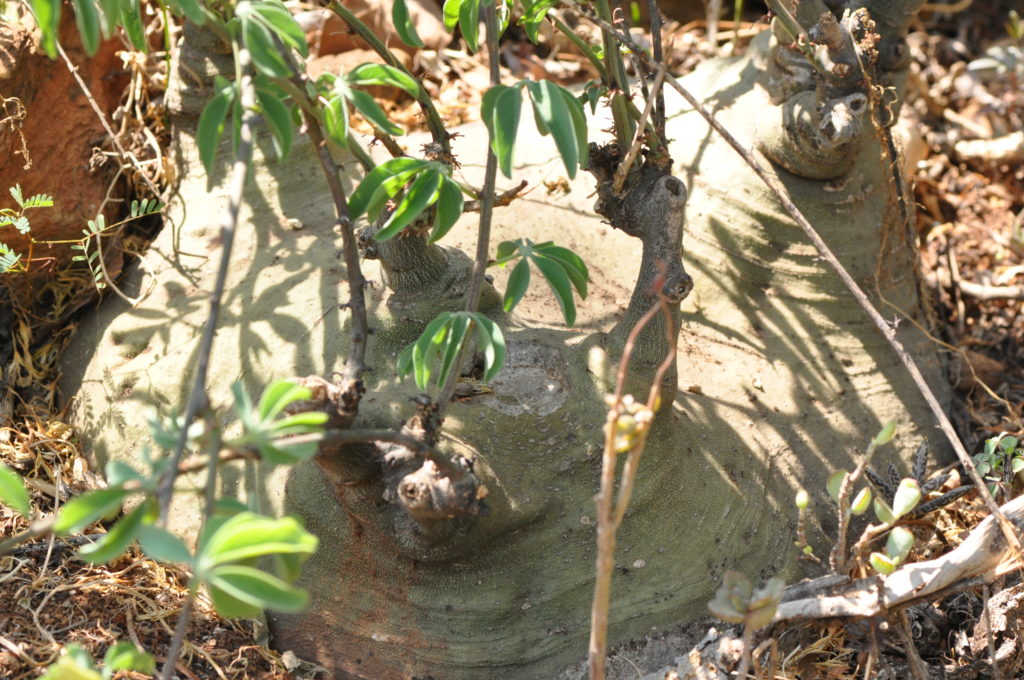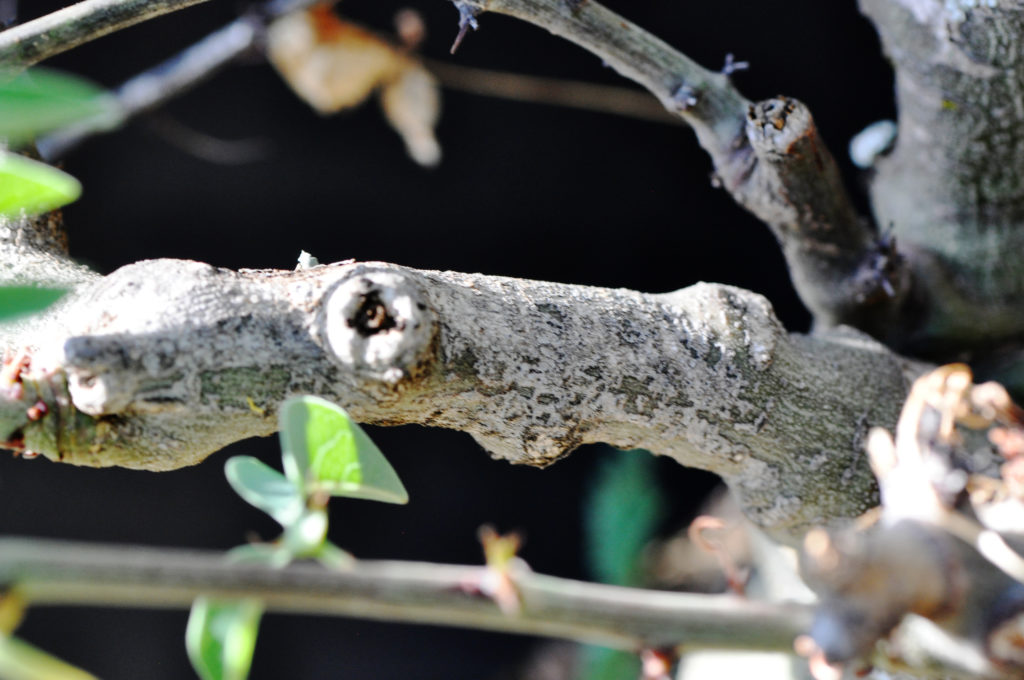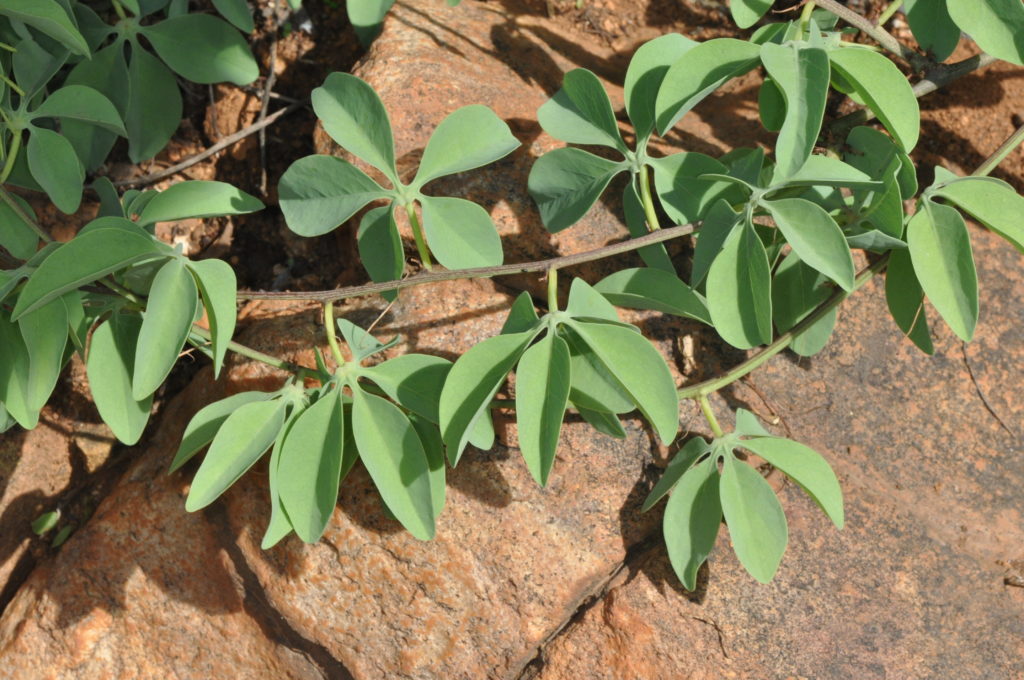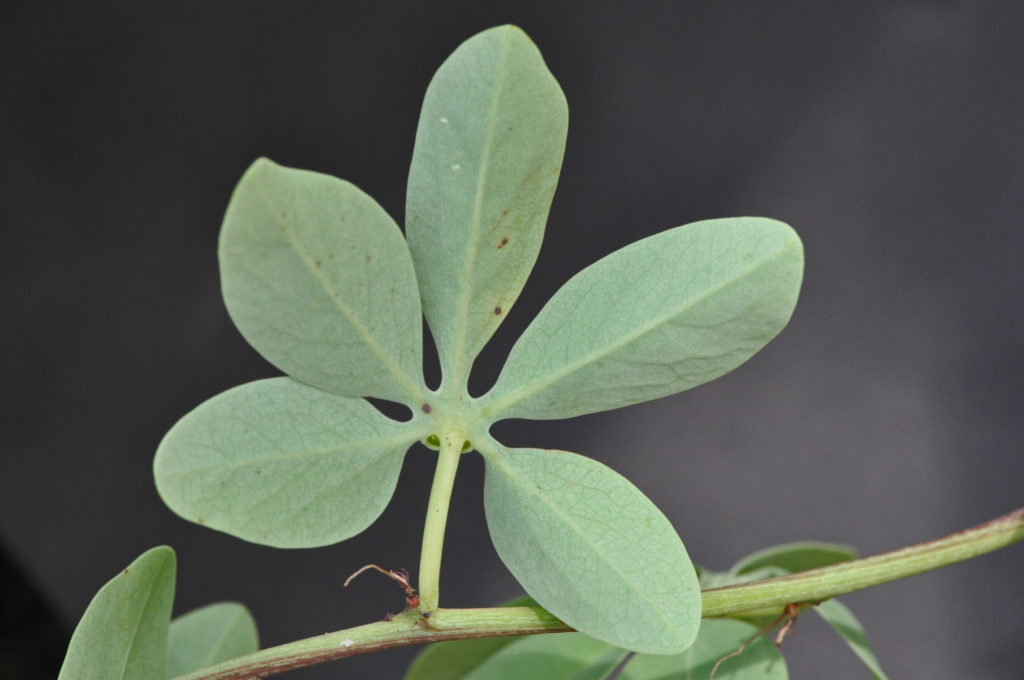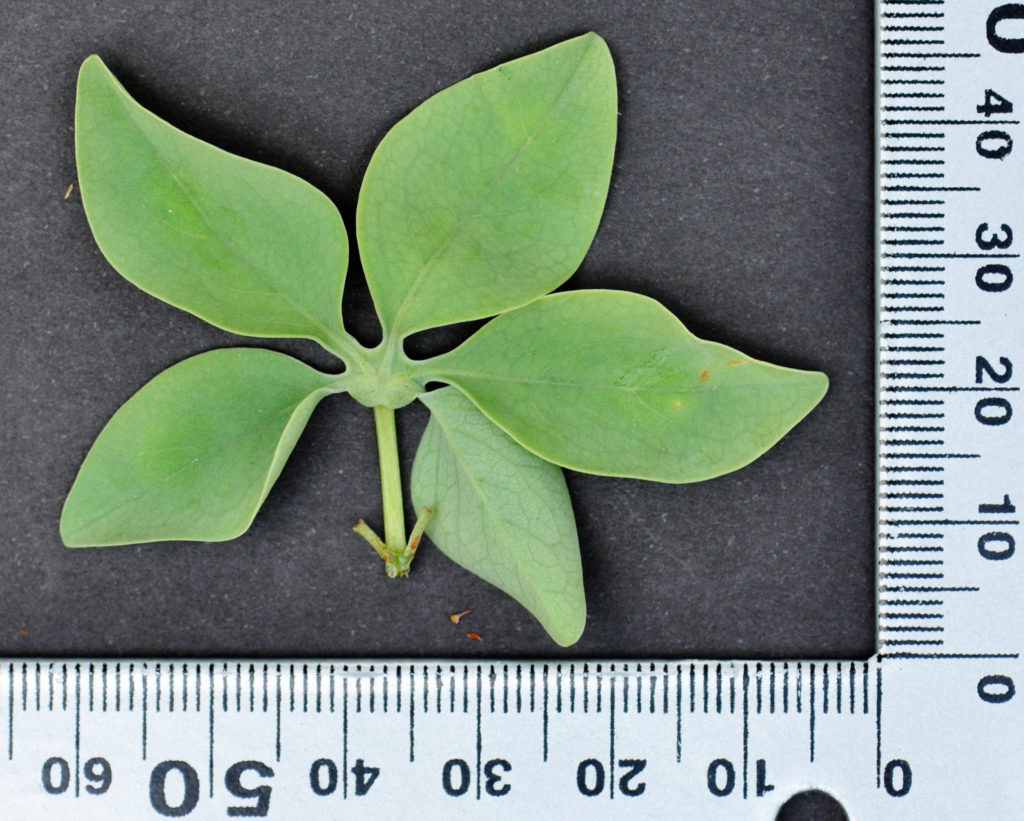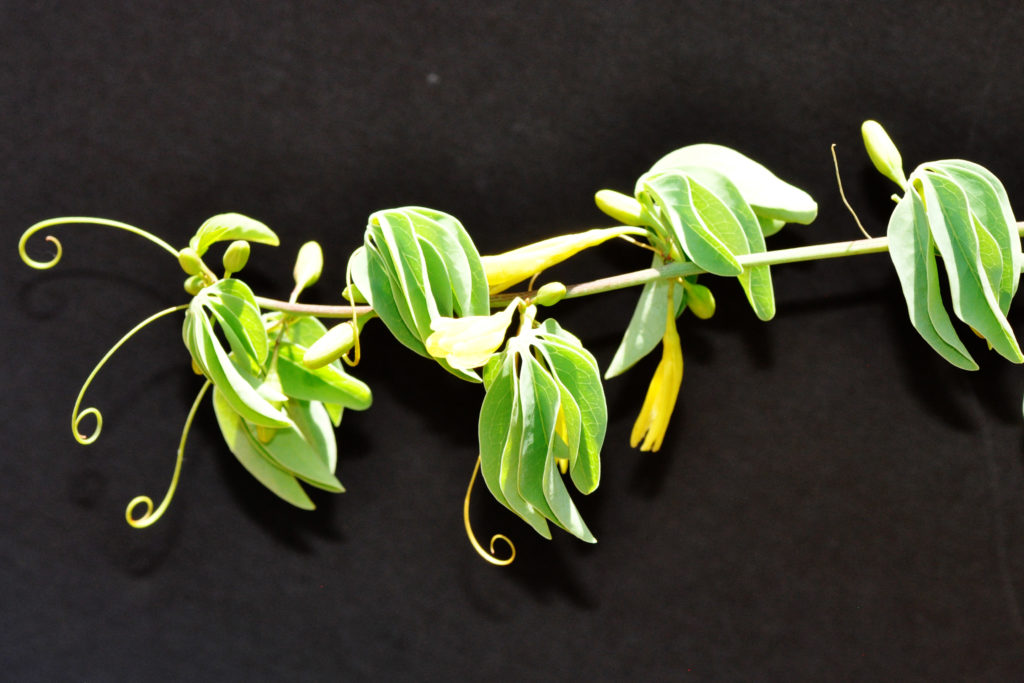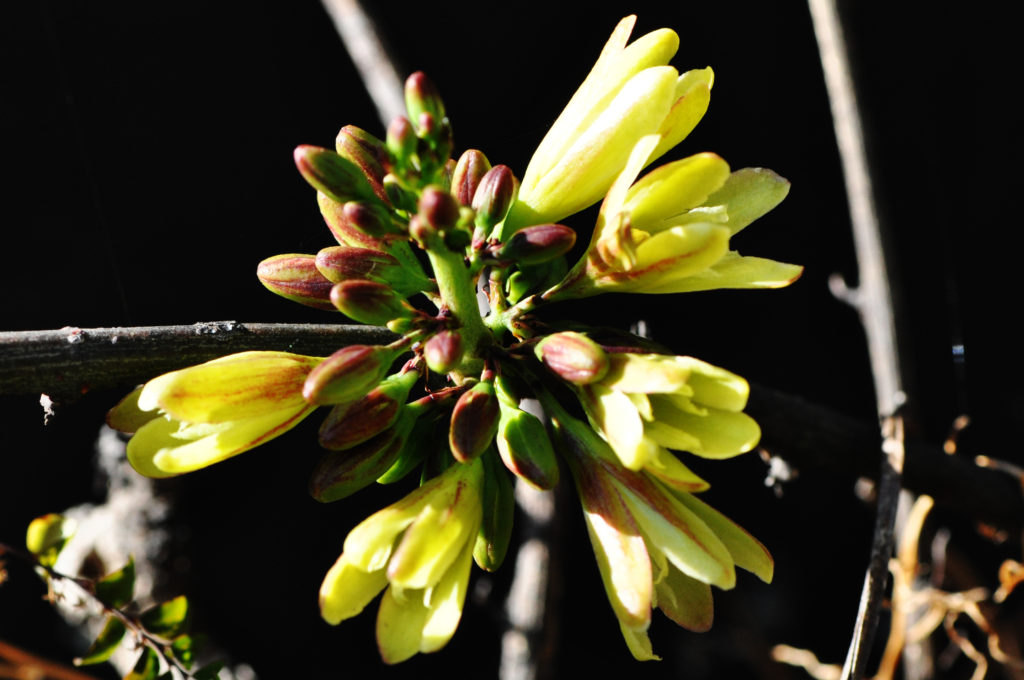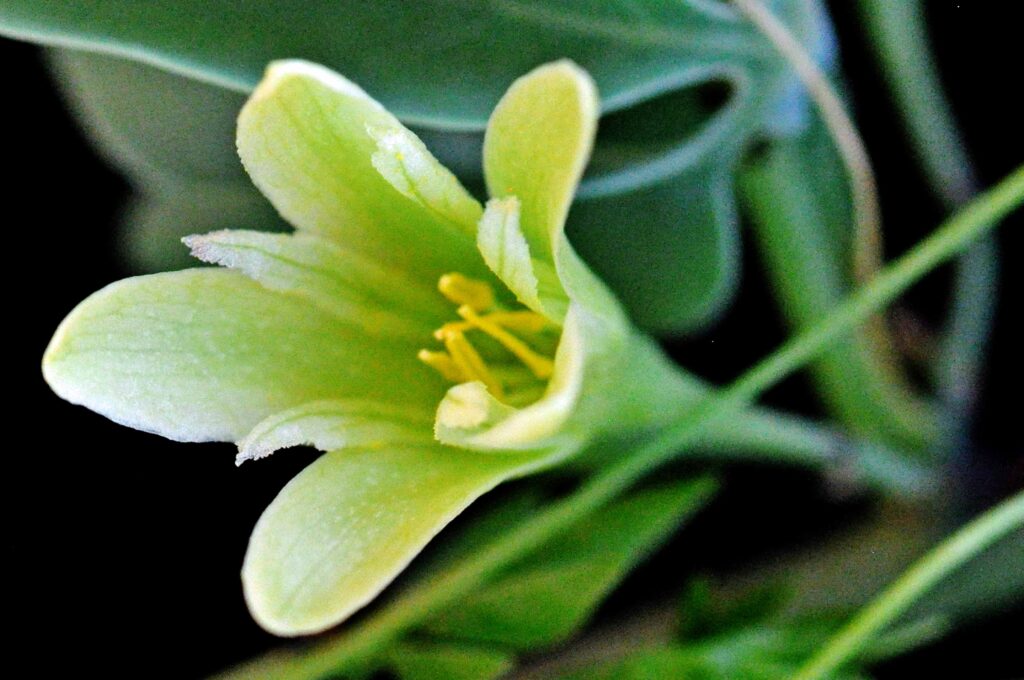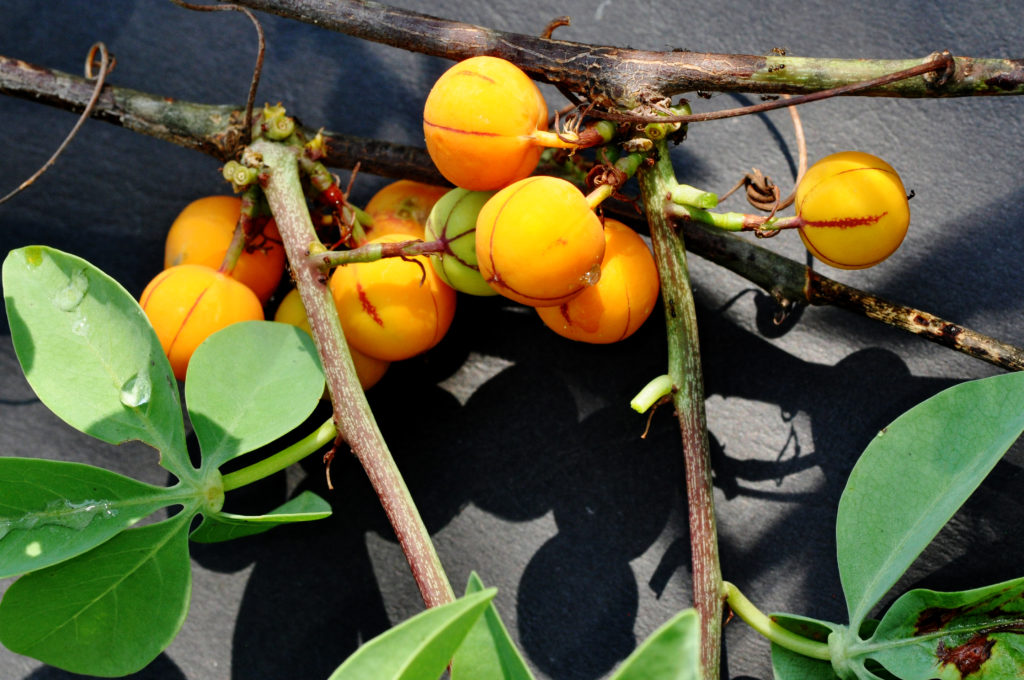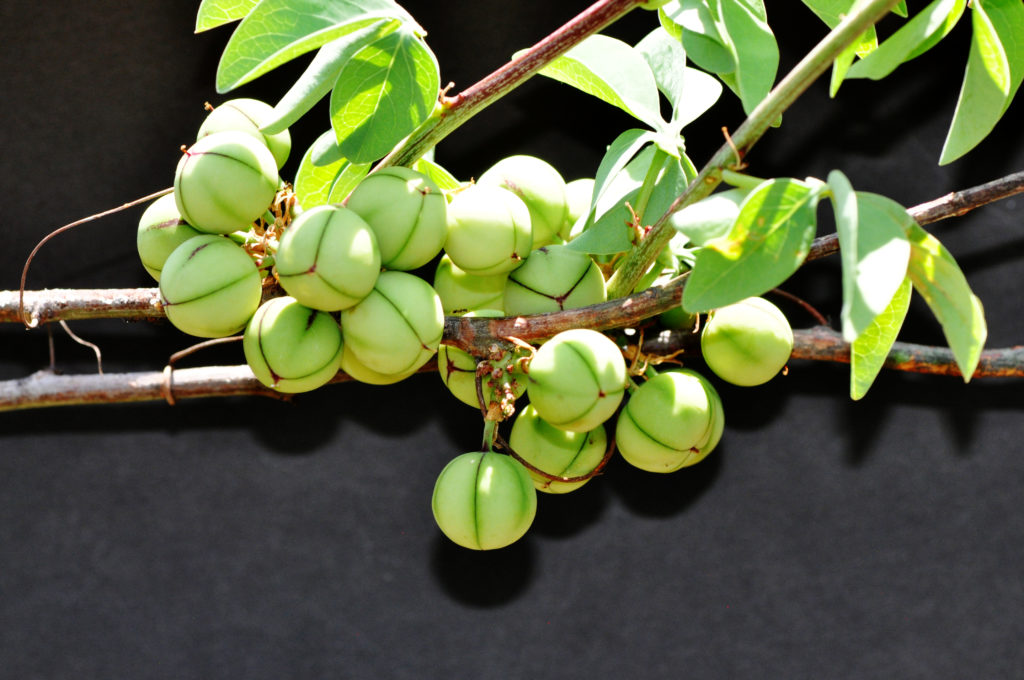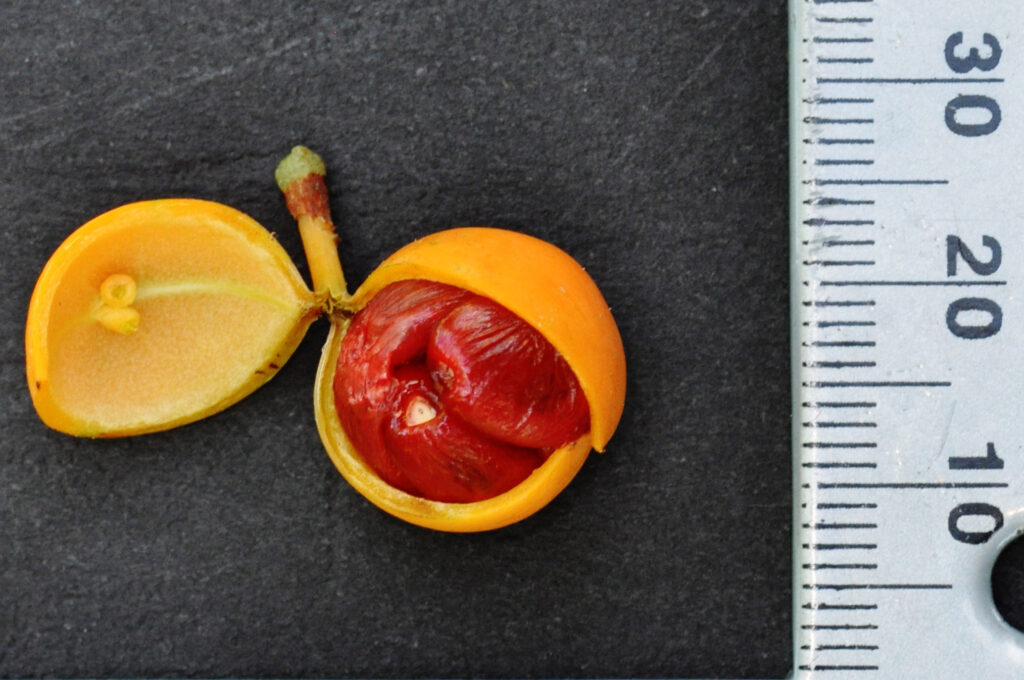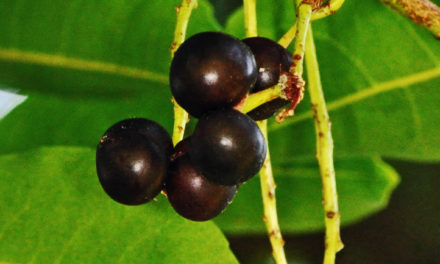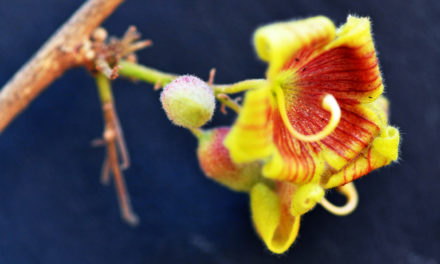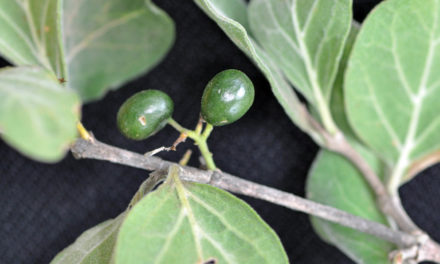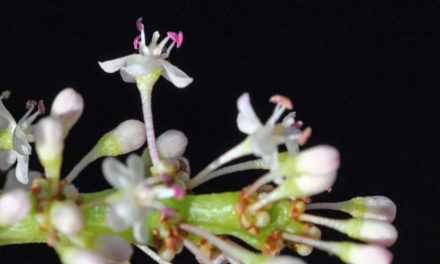General Info – summary.
This perennial climber & pachycaul Tree to 1m wide & 2m high + whip-like branches ending in climbing tendrils. Leaves 3-5 leaflets. The dioecious greenish white Flowers + petals much narrower than the sepals. Male flowers: rudimentary ovary & stamens shorter than petals. Female flower: Staminodes + 5 petals. 1 stalked pistil + superior ovary & short style. Fruit: orange capsule + 3-6 seeds in reddish arils.
Description.
Adenia fruticose subsp. fruticosa.
Previous Names: Nil.
SA Tree No. 512.5.
Common names: (A) Bobbejaangif (baboon poison), Sekoekoenie-bobbejaangif. (E) Green stem, Sekhukhune Greenstem.
Family: Passifloraceae. (Named after the passionflower in the largest genus Passiflora). Passifloraceae contains about 20 genera and 700+ species and includes the South American granadilla in the genus Passiflora. Local genera with trees include Adenia. This tropical family includes members that have tendril-climbing vines or are erect herbs. Flowers are actinomorphic, in 3-5 parts and bisexual or unisexual. The throat of the calyx often has a fringed corona (any appendage or extrusion that stands between the corolla and the stamens, or on the corolla, or is an outgrowth of the staminal part or circle). The superior ovary is usually sessile. Fruit is a capsule or a berry. Most Seeds have a fleshy or membranous aril.
Name derivation: Adenia: Gland. Conspicuous leaf glands occur in most species. fruticosa – shrubby or bushy. The genus Adenia has about 100 species worldwide and there are 9 species in South Africa.
Conservation: National Status: N T. Near Threatened. 2018 L. von Staden, J.E. Victor & A.E. van Wyk. Contributing factors include mining, human settlement and agriculture. In Zimbabwe, it is considered Vulnerable.
Tree
This Tree has an amazing main tuber-like stem – much of which is underground and 0,5m+ in diameter. The tree is said to be is pachycaul (has a trunk with a massive girth compared to its height). The soft woody base (photo 921) may reach 1m wide and 2m high (occasionally more). The Bark is green (photo 921) or yellowish. The base of the trunk tapers quickly into long, slim, whip-like Branches, which may be distinctively ribbed and are up to 5m long (photo 418). This is a perennial climber and the branches end in climbing Tendrils occurring opposite the leaves are up to 12cm long (photo 419 under Flowers). These tendrils enable the plant to climb.
- 921 2014.11.25 Walter Sisulu NBG. Photo: David Becking.
- 418 2014.10.28 Walter Sisulu NBG. Photo: David Becking.
- 420 2014.10.28 Walter Sisulu NBG. Photo: David Becking.
Leaves
The blue-green or grey-green, smooth and waxy Leaves have 3-5 leaflets (photo 156). The alternate leaves (photo 729) are ovate to almost round and up to 8 x 8cm. The thinly textured Leaflets are round, ovate to obovate and up to 6 x 4cm (photo 417). The apex is rounded and the base tapers (photo 156). The hairless leaflets tend to droop (photo 419 – under Flowers) and are pale green above and slightly lighter below (photos 417 & 156). The Margin is entire (with a continuous margin, not in any way indented). The distinct Petiole (leaf stalk) is up to 1,5cm long and there is a gland at the top of the petiole (better visible from below – photo 156). Petiolules (stalks of leaflets) are very short or absent. Tendrils (photo 419 – under Flowers) are up to 12cm long and may break off leaving a spine. The Stipules (basal appendages of the petiole) are small and acicular (needle-shaped: photo 156).
- 729 2014.11.18 Walter Sisulu NBG. Photo: David Becking.
- 156 2014.12.02 Walter Sisulu NBG. Photo: David Becking.
- 417 2014.10.28 Walter Sisulu NBG. Photo: David Becking.
Flowers
Each plant is dioecious (unisexual floral structures with functional male and female parts on separate plants). The unisexual Flowers are actinomorphic (Regular, symmetrical. Flowers are vertically divisible into similar halves by more than 1 plane passing through the axis). Flowers are solitary or arise in groups of 2-5 that emerge from the leaf axils in Cymes (broad, more or less flat-topped, determinate flower cluster, with central flowers opening first). Each bell-shaped flower (photo 1 189) is greenish white and up to 1cm long. The large free Sepals (photo 873) are overlapping. The 5 small Petals are much narrower than the sepals. They arise in the calyx tube and alternate with the sepals (photo 873). The 2-5 Male flowers are up to 15 x 5mm (photo 873). Anthers have 2-theca (pollen sacs). They open lengthwise to release pollen. On a separate plant, there are up to 3 smaller Female flowers which have a funnel-shaped receptacle (is that expanded tip of the flower stalk from which the floral parts develop. It is greatly expanded in the Asteraceae and Ficus) with stamens reduced to Staminodes (sterile stamens) which are connate at the base. There is a single, stalked Pistil (a unit of the Gynoecium, the female element of the flower, composed of the Ovary, Style and Stigma) with a superior unilocular (with one compartment) Ovary containing several ovules. The Style is short or absent and the Stigmas are papillate (small, rounded, nipple-like protuberance). (Aug-Dec).
- 419 2014.10.28 Walter Sisulu NBG. Photo: David Becking.
- 1189 2015.08.18 Walter Sisulu. Photo: David Becking.
- 873 2015.09.29 Walter Sisulu NBG. Photo: David Becking.
Fruit
The smooth, oval to almost spherical, orange to red Fruit is a 3 or 4-valved (photo 421) Capsule (a dry fruit resulting from the maturing of an ovary that usually opens at maturity by one or more lines of dehiscence). It is up to 2 x 2cm – usually less. The initially green capsule (photo 421) is pitted and turns orange when ripe (photo 920). In this photo the remains of the calyx is still visible. It is leathery with pale veins and stipitate (supported by a short stalk – photo 920 & 922). The 3+ circular or disc-shaped green Seeds are surrounded by a red fleshy Aril (an appendage or outer covering of a seed and may appear as a pulpy covering. It develops from a stalk, the funiculus, connecting an ovule or a seed with the ovary wall – photo 922). (Sep-Dec).
- 920 2014.11.25 Walter Sisulu NBG. Photo: David Becking.
- 421 2014.10.28 Walter Sisulu NBG. Photo: David Becking.
- 922 2014.11.25 Walter Sisulu NBG. Photo: David Becking.
Distribution & Ecology
This Unusual Plant is Endemic (restricted to a particular geographic location) in Limpopo (e.g. Chuniespoort) and Mpumalanga (e.g. Burgersfort) in Sekhukhuneland in both Limpopo and Mpumalanga South Africa. These plants are often located on rocky hills or mountain slopes.
Other species and subspecies grow in KwaZulu-Natal, Limpopo (North of the Soutpansberg Mountains), Mpumalanga, Botswana, Mozambique and Zimbabwe. They grow best in well-drained sandy soils. Plants grow in savanna (a rolling grassland scattered with shrubs and isolated trees, which can be found between a tropical rainforest and desert biome). They are also located on sandy flats as well as on dolomite, granite and quartzite rocky areas from 800 to 1 400m.
Ethnobotany
The sap contains cyanogenic compounds, which may release cyanide.
References
Boon, R. 2010. Pooley’s Trees of eastern South Africa. Flora and Fauna Publications Trust, Durban.
Coates Palgrave, M. 2002. Keith Coates Palgrave Trees of Southern Africa, edn 3. Struik, Cape Town.
von Staden, L., Victor, J.E. & van Wyk, A.E. 2018. Adenia fruticosa Burtt Davy subsp. fruticosa. National Assessment: Red List of South African Plants version 2020.1. Accessed on 2021/11/14.
Schmidt, S. Lotter, M. & McCleland, W. 2002. Trees and Shrubs of Mpumalanga and the Kruger National Park.
https://soekershof.wordpress.com/2010/08/02/adenia-fruticosa/
http://operationwildflower.org.za/index.php/plant-records/succulents/69-adenia-fruticosa-subsp-fruticosa
http://www.zimbabweflora.co.zw/speciesdata/species.php?species_id=141050
http://repository.up.ac.za/bitstream/handle/2263/17142/Crouch_Passifloraceae%282010%29.pdf?sequence=1&isAllowed=y
http://posa.sanbi.org/flora/browse.php?src=SP

